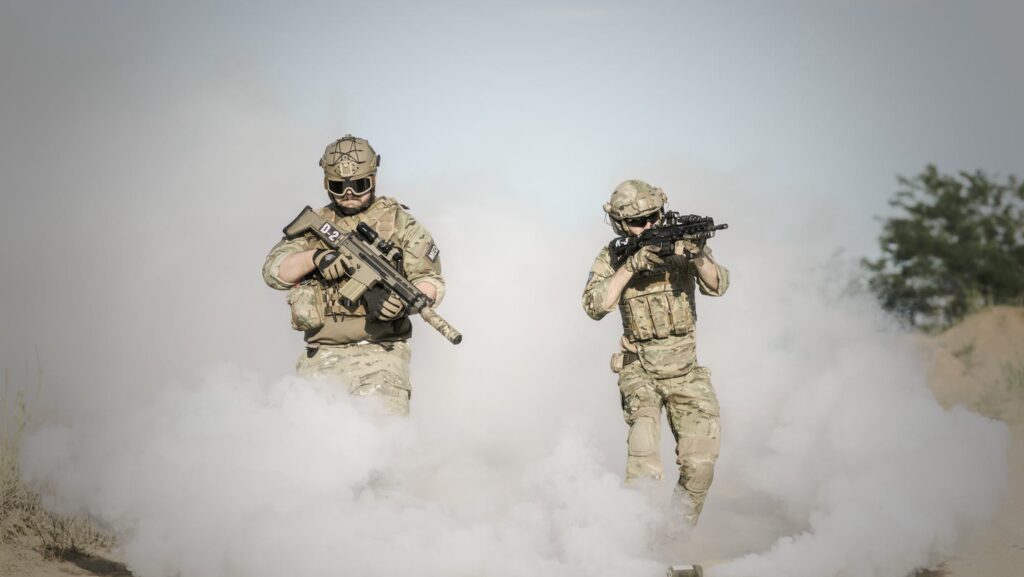
Early Symptoms of a Biological Attack May Appear
Recognizing the signs of a biological attack can be complicated, mainly because the symptoms often mimic those of common illnesses. It’s an unsettling thought, but being informed and prepared could potentially save lives. These attacks, involving the release of toxins or pathogens with the intent to harm, are rare but not unheard of. So it’s crucial to stay alert to certain warning signs that might indicate such a threat.
Initial symptoms may appear harmless – flu-like illness, minor skin infections, or gastrointestinal distress are common complaints. But if these conditions arise unexpectedly in clusters within your community or workplace – particularly if they’re severe or don’t respond to standard treatments – it might signal something more sinister at play.
Understanding these early telltale signs isn’t about creating fear; instead, it provides you with knowledge and readiness. It equips you with powerful tools for identifying potential threats and taking appropriate protective measures before things escalate further. Being able to spot these symptoms is one way we as individuals can contribute towards collective security in our societies against biological threats.
What is a biological attack?
Let’s dive right in. A biological attack, simply put, is the deliberate release of viruses, bacteria or other germs to cause illness or death in people, animals or plants. These agents can naturally occur but it’s often possible that they may be altered to increase their ability to cause disease, make them resistant to current medicines or even increase their ability to spread into the environment.
Bioattacks can be hard to detect because they don’t cause illnesses immediately. Instead, hours or days might pass before anyone gets sick and realizes what has happened. These attacks are usually invisible and odorless making them even more difficult for immediate detection.
Now you may ask – how does this happen? Well, there’s a variety of ways these harmful substances can be delivered – through the air by aerosols, via food and water contamination or even from person-to-person transmission.
The reason why I’m bringing up this topic is not to scare you but rather to inform you about a potential threat that we all need to be aware of. The early symptoms of a bioattack could resemble those of common illnesses like flu such as fever and fatigue which makes it important for us all know the signs.
In our world today where technology and science have advanced so much, these bio-attacks unfortunately have become more feasible than ever before. It’s vital we arm ourselves with knowledge so we’re better prepared if something like this were ever actually occur.
Remember folks, knowledge isn’t just power – it’s protection too!

The potential dangers of a biological attack
When it comes to biological attacks, I can’t stress enough their potentially catastrophic impacts. It’s crucial to understand that these attacks leverage harmful microorganisms or toxins with the intent to cause sickness or death among humans, animals, or plants. Imagine for a moment – deadly diseases spreading rapidly without immediate detection. That’s the reality we’re dealing with here.
A primary concern is the high infection rates associated with certain diseases. Let’s take anthrax as an example; it can spread quickly and widely through the air, causing severe respiratory illness and even death if not treated promptly.
Now let’s think about something more insidious: stealthy spreading. Some bio-agents might not show symptoms until several days post-exposure, giving them plenty of time to infect numerous individuals undetected. To put this into perspective:
| Bio-Agent | Incubation Period |
| Anthrax | 1-7 days |
| Botulism | 12-36 hours |
| Plague | 2-6 days |
Another danger lies in our collective vulnerability due to lack of immunity against many potential bio-agents. This isn’t like catching a common cold where you might have some resistance built up over time; we’re talking about exposure to organisms your body has never encountered before.
Moreover, these are just direct effects on human health. We also need to consider secondary repercussions such as social disruption and economic losses resulting from mass illness and panic.
In summary:
- High infection rates
- Stealthy spreading
- Lack of immunity
- Social disruption
- Economic fallout
All these factors paint a grim picture of the potential dangers presented by biological attacks. Awareness is key in preparing for such threats and minimizing their destructive effects should they occur.
As I wrap up this article, let me emphasize: education is our best defense against biological threats. The more we understand about them, their potential impacts and how to recognize them – the better equipped we’ll be to respond effectively should they ever occur.
Our health and safety lie not just in our hands but also within our minds – every piece of knowledge counts! So stay alert, stay informed and most importantly – keep learning!












